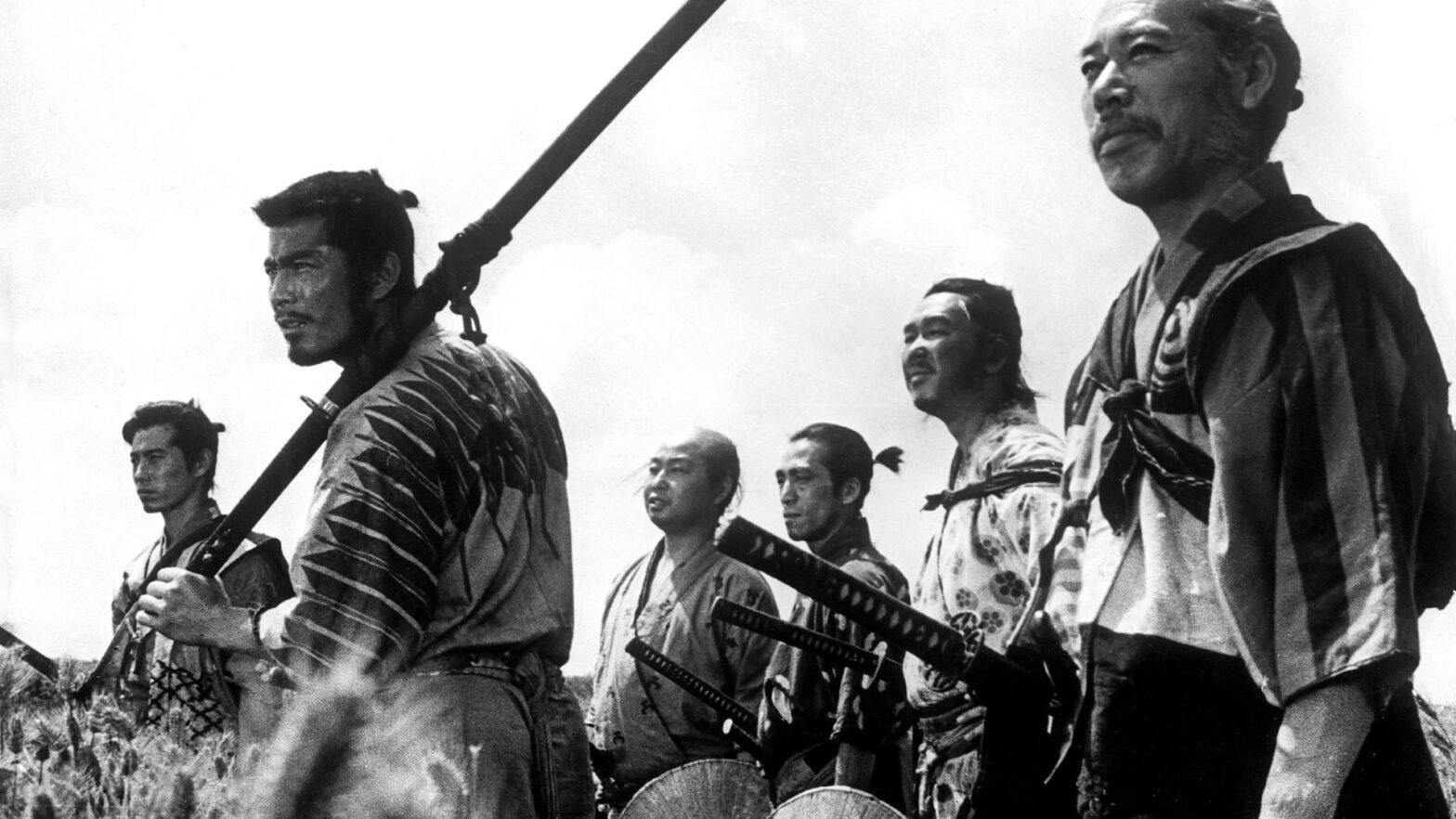Movie Review: Seven Samurai (1954) directed by Akira Kurosawa
It is in the Warring Stages period of Japanese history, but between major battles, so many samurai and soldiers are at loose ends, and bandits roam the countryside. An isolated farm village learns that the local bandit gang that already took their rice harvest is coming back in a few weeks when the barley harvest is brought in. The magistrate of the territory is less than proactive, only coming out after a bandit raid to tut at the damage and enforce the tax collection. The farmers gather to discuss their options: give the bandits what they want and starve to death, defy the bandits and be slaughtered, or commit suicide now and not give the bandits satisfaction. Farmer Rikichi (Yoshio Tsuchiya) has suffered too many losses to consider bowing to the evil ones. Old Man Gisaku (Kokoden Todo), who lived through similar events before, remembers that the one village in his previous province that did not burn was the one that hired samurai mercenaries.

Because the village is poor, Rikichi and some fellow farmers go off to the big town to find hungry samurai who are willing to work for just getting fed. This goes poorly at first. But then the men run into Kambei Shimada (Takashi Shimura) who demonstrates his willingness to think outside the box by allowing his head to be shaved like a monk in order to save a child’s life. Even he turns them down at first, but is stung by a low fellow’s taunting of the farmers to step up.
Kambei quickly assembles a team of seven “samurai”, the minimum he thinks he’ll need to handle forty bandits. Gorobei Katayama (Yoshio Inaba) is an observant fellow who is hard to trick. Heihachi Hayashida (Minoru Chiaki) isn’t the best warrior, as seen by the fact that he’s been reduced to woodchopping for meals, but is upbeat and likable. Kyuzo (Seiji Miyaguchi) is a stoic master swordsman. Shichiroji (Daisuke Kato) is Kambei’s old colleague who had been thought dead, but is more than willing to become his friend’s second in command. Katsuhiro Okamoto (Isao Kimura) is an idealistic young man who has never known true combat but finds Kambei inspiring. And then there’s “Kikuchiyo”, a rough, ill-mannered man who tries to use a “borrowed” family ledger to prove he’s the youngest child of a samurai family, but because he is illiterate, doesn’t realize that he’s pointing to a girl’s name. The others don’t accept him at first, but Kikuchiyo proves useful…eventually.
This hastily assembled team travels to the village, knowing that there’s little time to create fortifications, give the peaceful villagers some basic combat training, and learn to mesh as a group.
This 1954 film is one of the all-time greats, immensely influential in plot structure, characterization, and cinematography. Even the oddly-aligned title sequence stands out. Its most immediate descendant is The Magnificent Seven, but plenty of other movies have taken their cues from Seven Samurai as well.
We’ve got a good spread of character types among the samurai and villagers, from cowards to fools to the weary wise. (The one area where we don’t get much characterization is among the bandits, who don’t have much in the way of conversation.)
The one hint of romance is between Katsuhiro and village girl Shino (Keiko Tsushima), whose father Manzo (Kamatari Fujiwara) was so paranoid about the possibility that he chopped off her hair and forced her to wear men’s clothing in a futile attempt to hide her. It…doesn’t turn out as you’d expect in an American film of the same vintage.
This is a long movie, about 3 and a half hours including an intermission. Much of this is long relatively quiet dramatic or comedic scenes; between that and the fact the movie is in black and white, some younger viewers may not be ready for it, at least not all in one sitting.
Content note: Lots of lethal violence, but very little blood. Offscreen rape. Offscreen consensual extramarital sex. Parental abuse and slut-shaming. Suicide is discussed but not shown. Some cultural differences between 16th Century Japan and 21st Century America may be distressing to the sensitive. Men wear skimpy loincloths. (There’s also shots that focus on women’s rear ends but they’re fully covered by loose kimono so not as racy for modern viewers.)
Absolutely a must see for movie fans, especially if you are lucky enough to have it appear in an actual movie theater near you.

